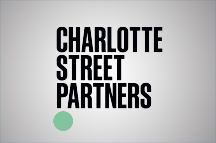There is an abundance of tools at the disposal of the modern communications professional.
Social media platforms have given individuals and firms their own routes to audiences. Self-produced video content allows people to present themselves, unfiltered, to the world at a moment’s notice. Artificial Intelligence (AI) is changing the way that content is created and making us question how much of it we can trust.
We write regularly here about the opportunities and ills associated with these instruments and their deployment. But in keeping with my Luddite tendencies, my subject today is a comms medium as old as the hills – the public meeting.
I attended just such a ‘townhall’ recently, which had been called by a quango to provide the community with an update on a local economic regeneration project. The site of the proposed development is highly visible, highly emotive as an emblem of our town’s industrial heritage, and highly coveted by local residents and businesses for the opportunities it promises to create.
I was there as a punter rather than a practitioner, but the curse of the comms consultant is that we are hardwired to analyse every media interview, written statement, news story and public engagement from a professional perspective. Before long, I had lapsed into work mode and was asking myself what I would have advised had this been my client’s meeting.
So, I offer here my Dos and Don’ts of Public Meetings for you to consider, counter, contradict, complement, or concur with.
DO prepare. Think carefully about exactly what you want to say in advance and, crucially, what you definitely don’t want to say. Repeat your key messages by all means, but if you err and say the thing you meant not to say, definitely don’t repeat that.
DO consider what the audience will want to hear, as well as what you want to communicate. What is their level of knowledge? What expectations do they bring to the meeting? What did you tell them last time? Will this news come as a surprise?
DO introduce all speakers, panellists, partners, public officials, and anyone else who is part of the organising team. Wear name badges. Explain your roles and remit. To presuppose that we all know is thoughtless at best and arrogant at worst.
DO keep it simple. If you need to convey complex information or use data, graphs, or charts to support your arguments, make sure they are pitched at the right level and clarify rather than confuse.
DO your research. Know who the key community representatives are – community council members, entrepreneurs, town stalwarts and standard bearers – and know who’s in the room. If you don’t know for sure, assume they are all present and temper your comments accordingly.
DO pay attention to practical and logistical considerations in the venue. These things may seem mundane, but they are critical. For example, can everyone hear? Can people at the back see the speakers and any presentational materials? If you’re taking a question from someone in the front row, is it audible to the rest of the audience? If not, you need to provide a roving microphone or repeat every question before you answer it, as tiresome as that may seem.
DO make people feel welcome. Invite anyone standing at the back to come and sit down, especially if you know they’ll struggle to read the slides or it’s going to be a long meeting. It might be their town hall, literally, but you are the host if you called the meeting.
DO consider how you will answer attendees’ questions. Write a list in advance of the most likely Q’s you’ll be asked and rehearse the A’s for each. Practice with your team until each answer strikes the right tone and provides the required information.
DON’T assume people are familiar with the jargon of your day job or the alphabet soup of acronyms, funding pots, government bodies and public policy references that are second nature to you and your colleagues. They might mean nothing to Mr Smith at number 23.
DON’T get names wrong. That goes for people and places. If you’re trying to persuade the good people of Kinraddie you understand their concerns and care about their landmark project, don’t say how much of it a pleasure it is to be back here in Kendarrie.
DON’T confuse public money with your own. It is not “your” money, you are simply someone who is charged with managing, spending, or investing it.
DON’T leave people wondering about your competency. If one of your objectives is to demonstrate you can be trusted to manage public money responsibly, show us you are capable of running a public meeting proficiently.
DO provide a clear indication of what happens next. What will you do with the feedback you’ve been given during the meeting? What does the community need to do? What are the deadlines for those actions and what are the implications if they are missed?
DON’T wing it. You will fall, not fly.
What do you think? Do you agree or disagree with my list? What else is it missing?












